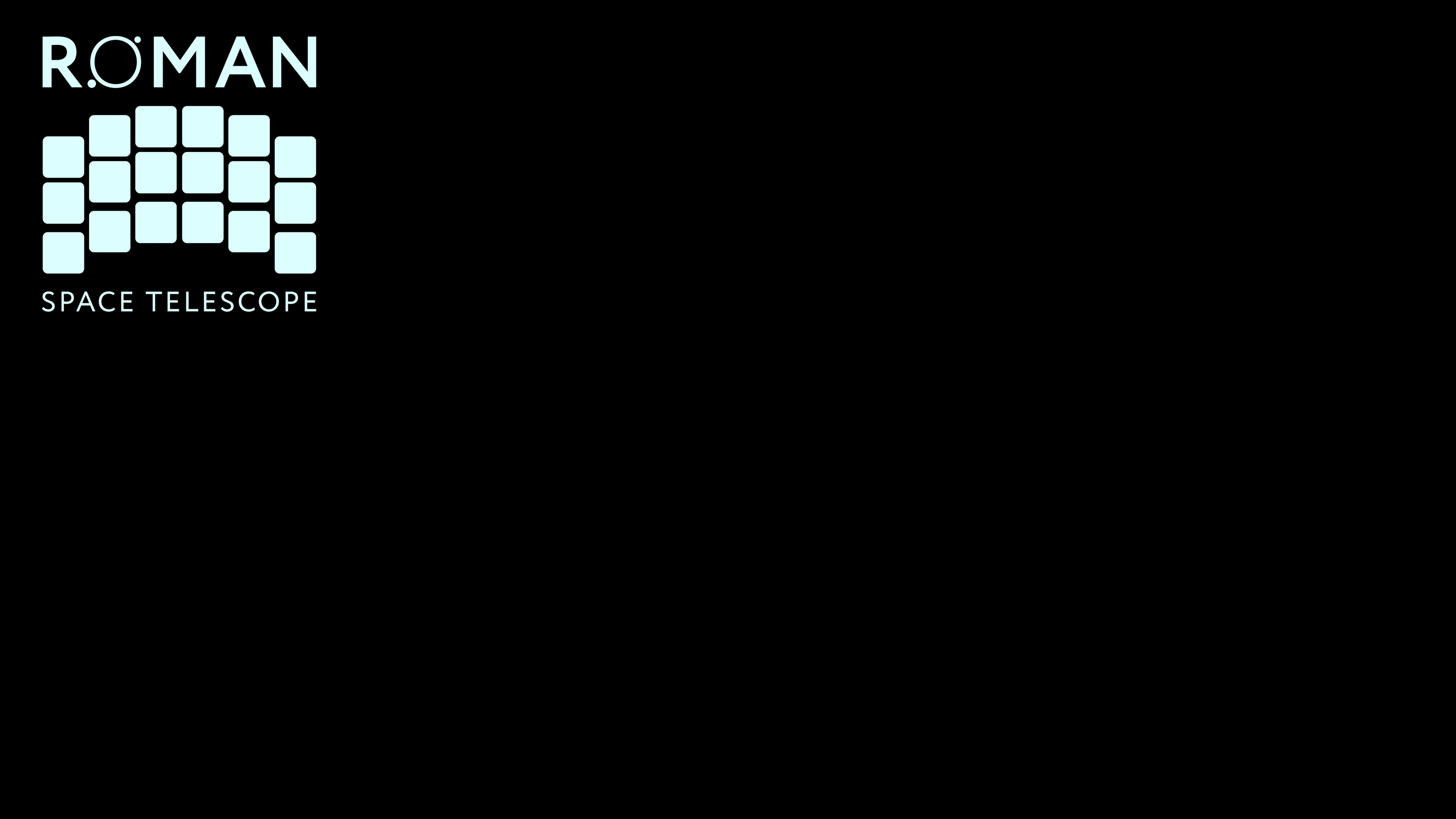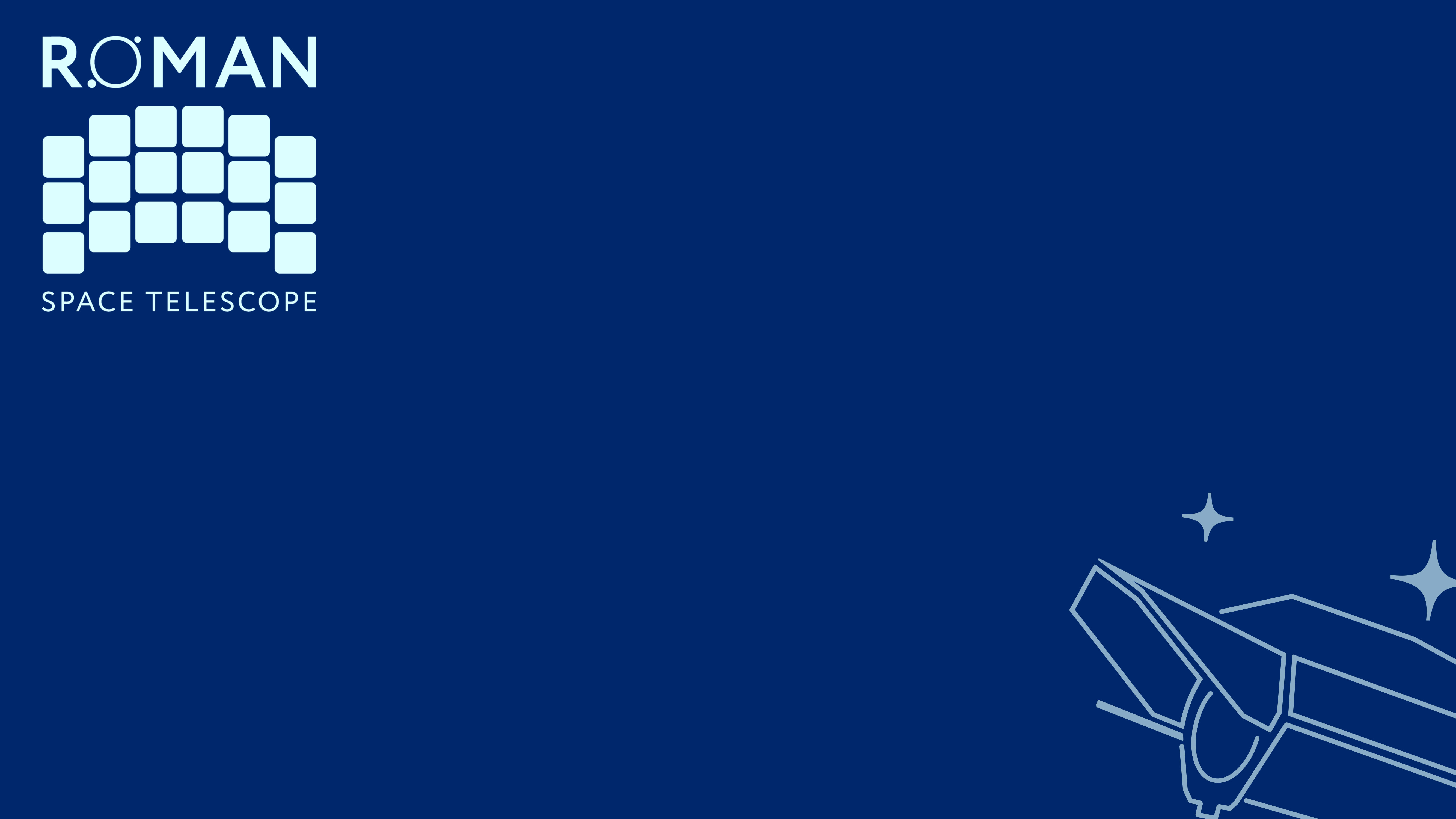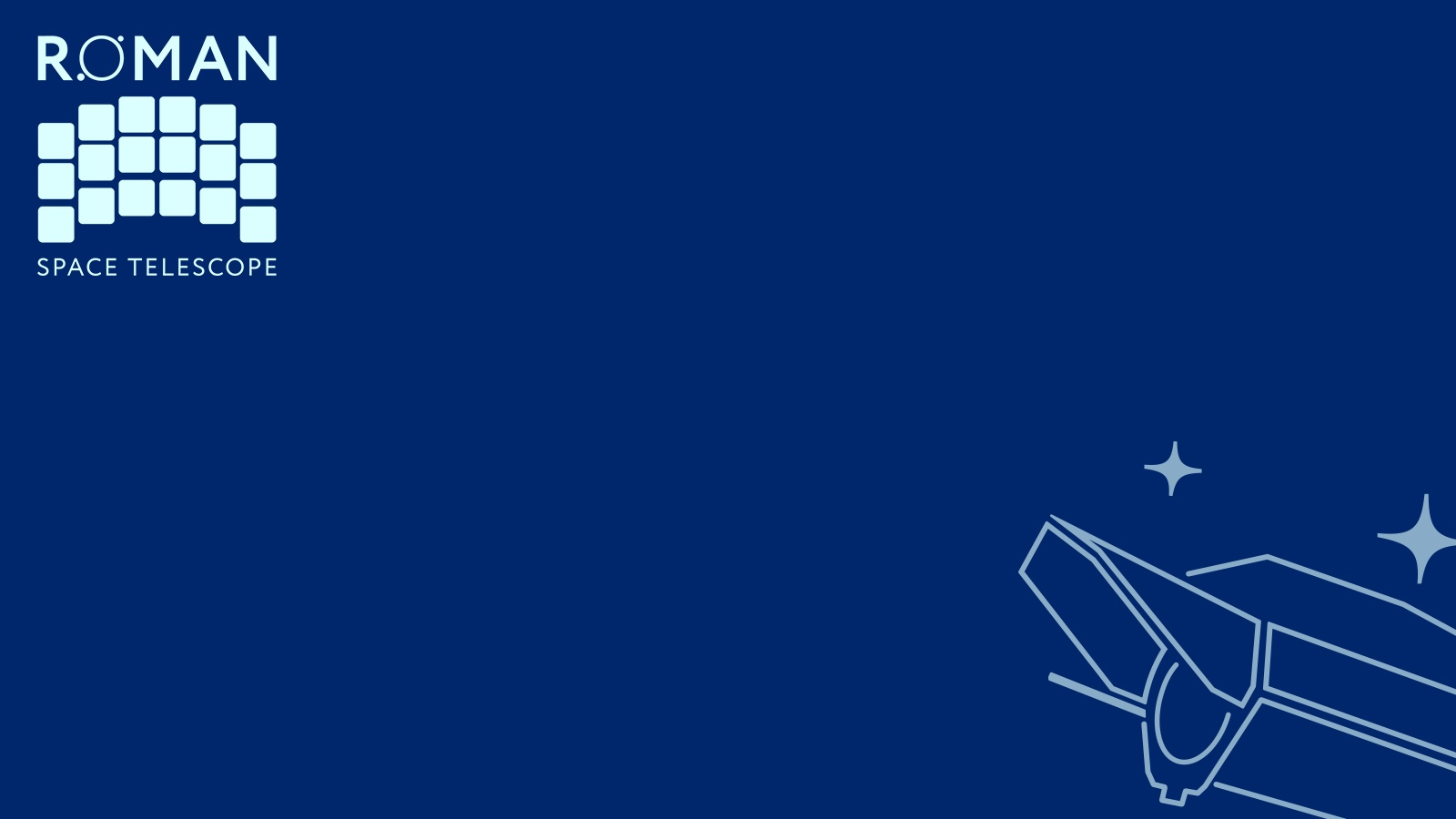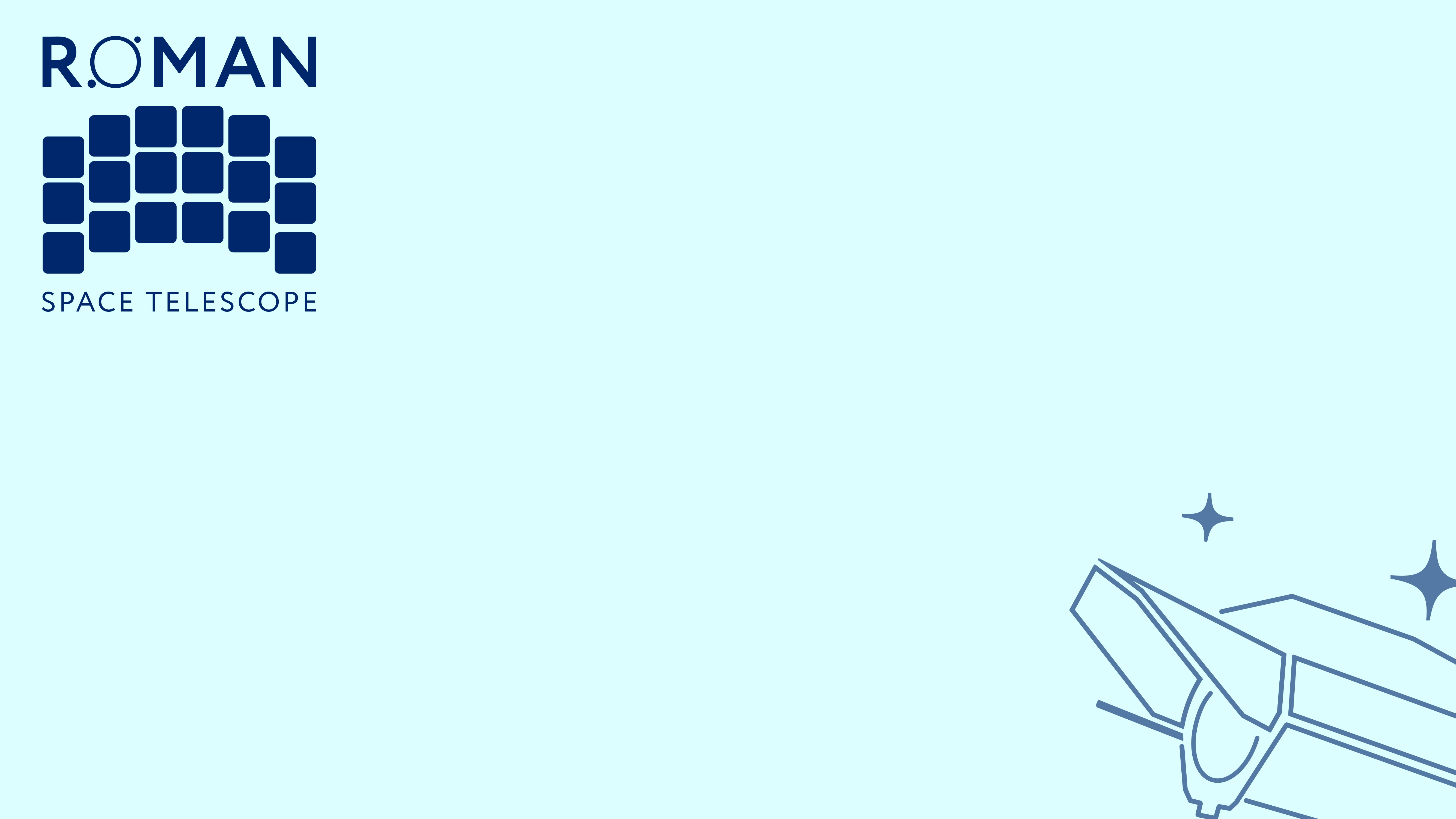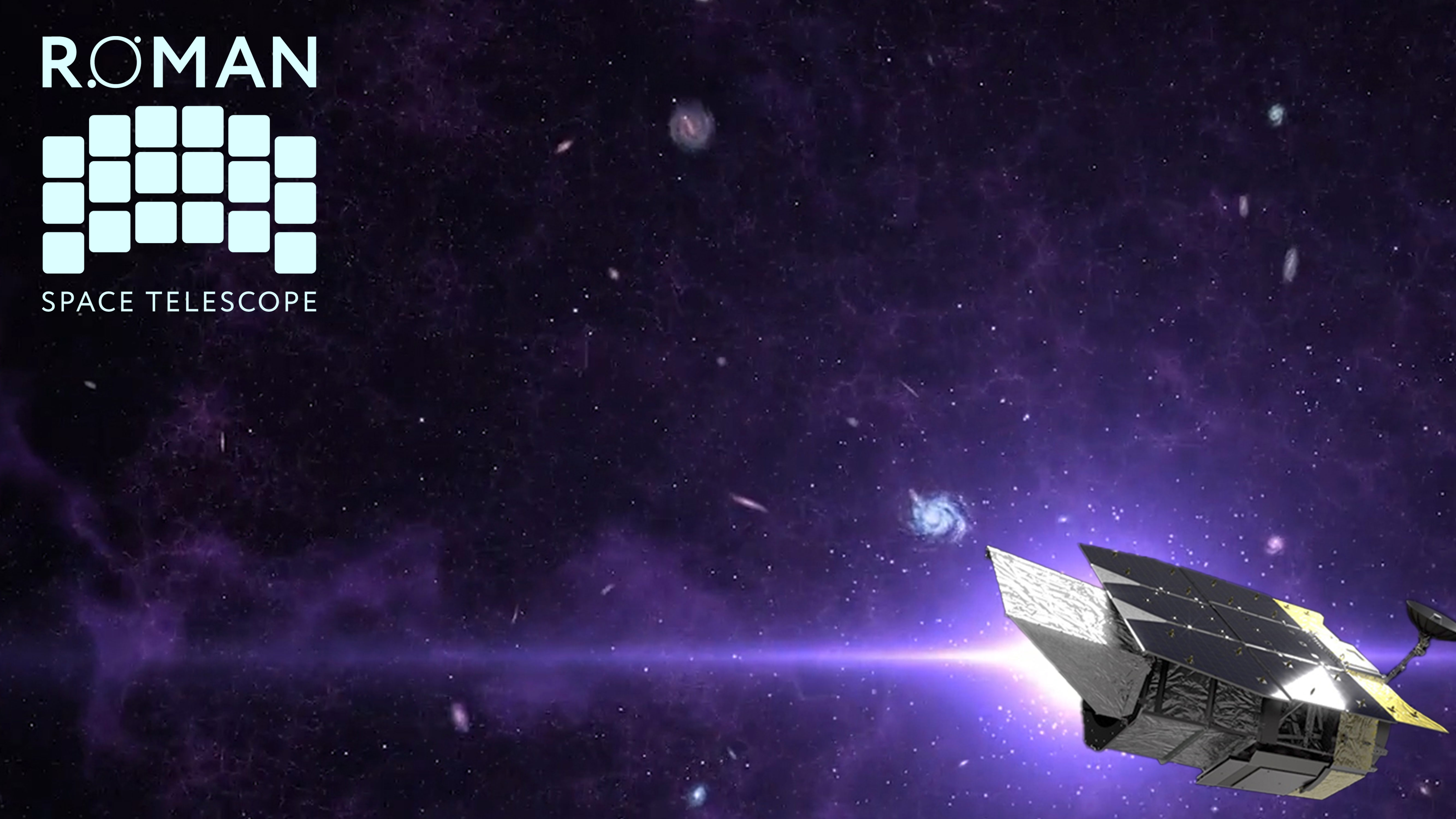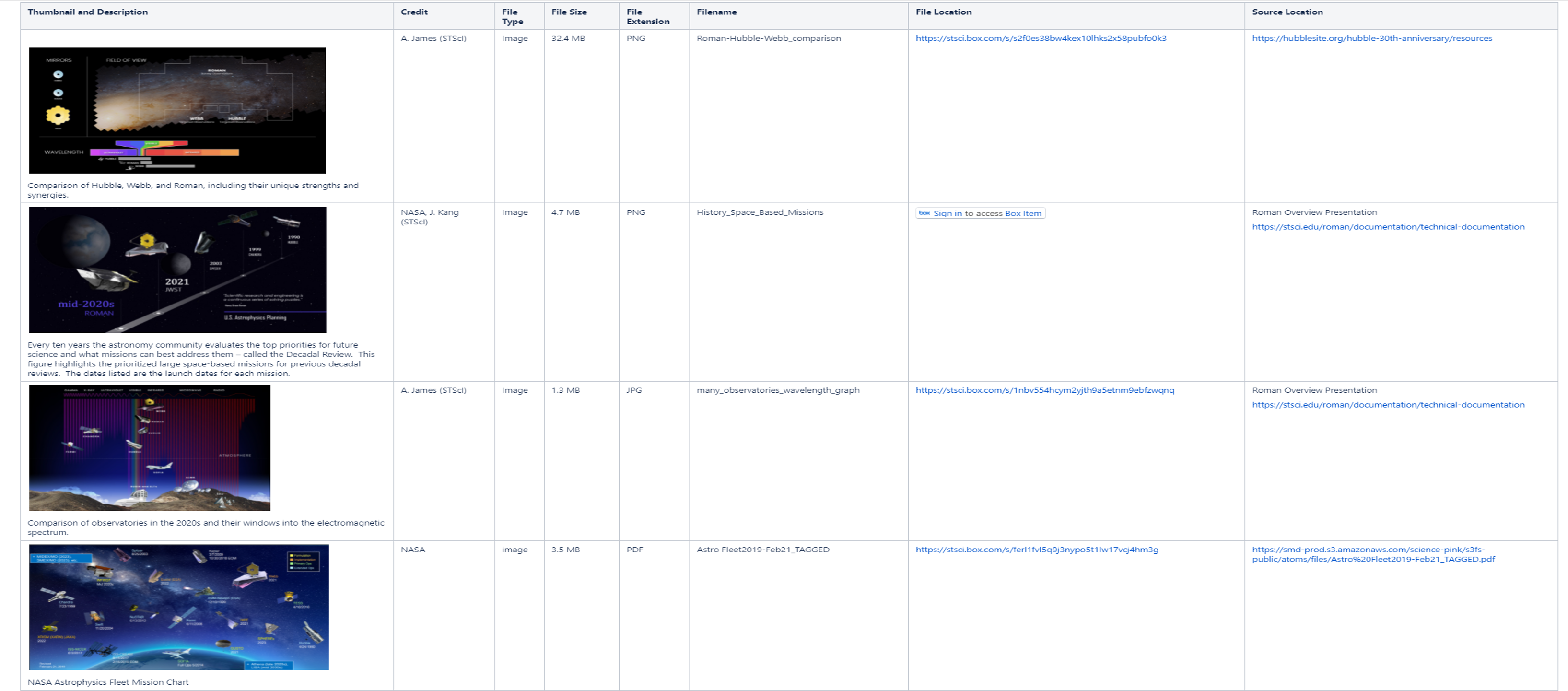Notice
If you are working on press-worthy science that relates to future Roman WFI science, we invite you to share your work with Brandon Lawton - lawton@stsci.edu - Project Scientist, Roman Science Communications.
Brandon will be at the STScI booth and will work with the Roman partners to share your exciting science with the world!
Roman Events at the 243rd AAS Meeting | ||
| Location | Title | Date and Time (MDT) |
|---|---|---|
Roman Resources |
Call for Community Input into the Definition of the Roman Space Telescope’s Core Community SurveysOpen Opportunity to Get Involved! The Roman Mission requests the astronomical community's input for the purpose of initiating the community-led definition of the Roman Space Telescope's Core Community Surveys. To maximize participation, this call for input consists of two independent avenues for members of the community to provide information on science drivers and the requirements they place on the design of the Core Community Surveys. The second avenue, technically focused white papers describing what observing strategies are needed for a given science investigation, is now open. White papers are due by June 16, 2023. The first avenue, submission of a short, one to two paragraph 'science pitch' (including a questionnaire) was due February 17, 2023, and resulted in more than 100 submissions. Submission of a science pitch is not required for submission of a white paper. All members of the community are encouraged to submit their science investigation ideas. The Roman Mission wants to hear from scientists worldwide across all career stages, positions, and types of institutions. All input will be passed to the committees that will be formed of community members and tasked with defining the Core Community Surveys. |
Roman Science and Technical Overview BookletThis 36-page booklet provides a current overview of the scientific capabilities, technical specifications, and operations of the Nancy Grace Roman Space Telescope. It can also be found here. |
Roman Community ForumThe Roman Space Telescope mission partners are planning to start the Roman Community Forum. This will be a monthly virtual meeting that will provide updates on Roman mission status and plans, and an opportunity for the science community to engage with the Roman Project and Science Centers. |
Roman Virtual Lecture SeriesThe Nancy Grace Roman Space Telescope monthly virtual lecture series is run jointly by JPL, IPAC, Goddard, and STScI. These talks are open to the entire astronomy community and cover science, engineering, and technology related to the Roman mission. All are welcome and encouraged to attend. Talks are ~20 minutes with ~10 minutes for Q/A, and are scheduled for the 3rd Thursday of each month from 1-1:30 pm Pacific / 4-4:30 pm Eastern. |
Roman Virtual BackgroundsHere are a series or Roman virtual backgrounds you can use in your virtual meetings and presentations. |
Roman Slide SetThis presentation highlights the science that will be enabled by the Nancy Grace Roman Space Telescope. The presentation includes notes for the presenter and can be used as a whole or in parts. The presentation comes in multiple formats, found here. We encourage scientists to take and use any or all of these slides, modified if needed, for your presentations about Roman science. |
Roman Visual LibraryThe Roman Visual Library, located here, is a resource for astronomers to grab Roman-related images. You can find images, captions, credits, and image source locations here. |
Roman BrochureTargeted for launch in late 2026, the Nancy Grace Roman Space Telescope will revolutionize astronomy by building on the science discoveries and technological leaps of the Hubble and Webb space telescopes. The Roman brochure, located here, provides a simple way to express the power of Roman's field of view and is useful for all audiences. |
Come and Find Us in the Exhibit Hall! |
How to Connect With Us |
|---|
NASA (Booth 702)
The Roman Space Telescope Project Office is at NASA's Goddard Space Flight Center, which also oversees the work on the Wide Field Instrument (WFI), the Spacecraft Bus, and System Integration.
Come to the NASA Town Hall
Come by the NASA Town Hall, date TBD, to hear the latest news about Roman and other NASA efforts from NASA officials.
STScI (Booth 614)
STScI is Roman’s Science Operations Center (SOC). The SOC is responsible for the mission's observation scheduling system, WFI data processing system for the direct-imaging mode and the mission's entire data archive. STScI performed pre-formulation, formulation, and design activities for Roman starting in 2014, and continues its role in science operations system engineering, design, science research support, and scientific community engagement and public outreach.
Contact us with questions
The Roman Help Desk is operated joinly by the SOC and the SSC. Contact the SOC helpdesk for questions about SOC tools, WFI imaging, data calibration and archiving, proposal planning and scheduling.
Caltech/IPAC (Booth 714)
IPAC is home to the Roman Science Support Center. IPAC is responsible for Roman’s Coronagraph Instrument operations, high-level data processing of grism and prism data from the Wide Field Instrument (WFI), high-level data processing of WFI microlensing survey data and community engagement for Roman exoplanet science and wide field spectroscopy. IPAC will also implement the proposal solicitation and grant management for the General Observer, Guest Investigator and Theory programs, curate telescope instrument and simulation efforts and engage the greater scientific community in preparing for science with Roman.
Contact us with questions
The Roman Help Desk is operated joinly by the SOC and the SSC. Contact the SSC helpdesk for questions about WFI spectroscopy, microlensing data processing, the proposal submission and review process, and the coronagraph.
JPL Exoplanet Exploration Program
NASA’s Jet Propulsion Laboratory is building the Roman Coronagraph Instrument, which will demonstrate the technologies needed for future missions to image and characterize rocky planets in the habitable zones of their stars. By demonstrating these tools in an integrated end-to-end system and enabling scientific observations, NASA will validate performance models and provide the pathway for potential future missions and technologies.
Future Conference - Be Sure to Mark Your Calendars! |
|---|
